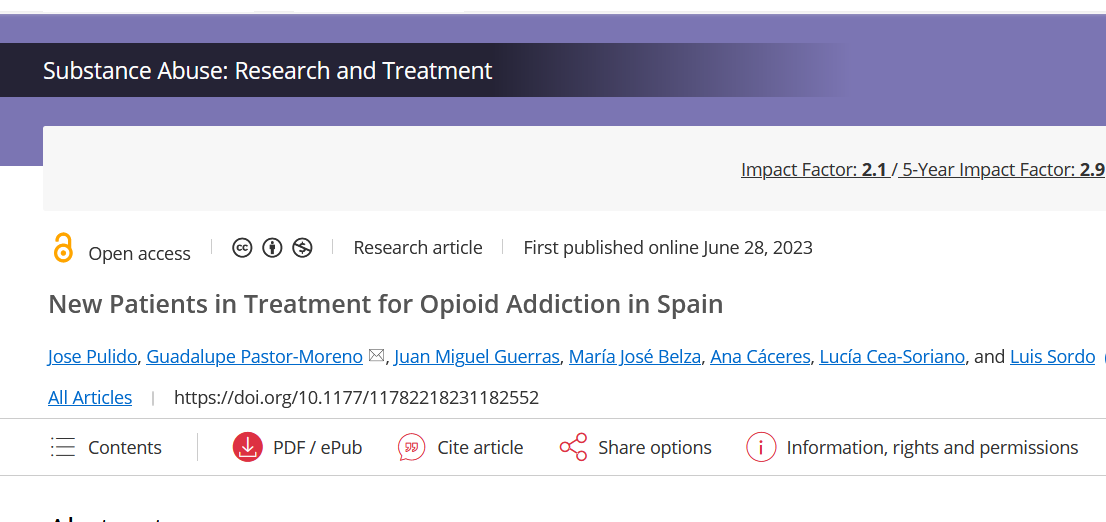
Introduction:
Patients seeking first time treatment for opioid consumption reflect the characteristics of the consumer population. This group has not been studied in Spain in decades. The objective of this study was to characterize the opioid user population seeking first time treatment (incidents) and compare them group with those with prior treatment (prevalents).
Methods:
Cross-sectional study (N = 3325) with patients with opioid addiction seeking care at public addiction centers in the Community of Madrid from 2017 through 2019. Differentiation and comparisons were carried out using bivariate analysis, adjusted by sociodemographic characteristics related and those related to substance use consumption in incident and prevalent patients.
Results:
About 12.2% were incidents. Compared to prevalents, there were more foreigners (34.1% vs 19.1% P < .001), but with a better social network. Regarding opioid use, incidents were less likely to use injection (10.7% compared to 16.8% P = .008), but had greater daily frequency (75.8% vs 52.2%, P < .001). The age of initial consumption was greater (27 years vs 21.3 years, (P < .001)). About 15.5% of incidents sought care for non-heroin opioids, compared to 4.8% of prevalents (P < .001). Women sought care at twice the rate of men (29.3% vs 12.3%; P > .001).
Discussion:
New patients presented a profile with many stable characteristics, but which highlighted an increase in the use of other opioids, as occurs in the international context. Surveillance of the new patient characteristics can serve as an early indicator of consumption changes in. Thus, periodic monitoring is important.


